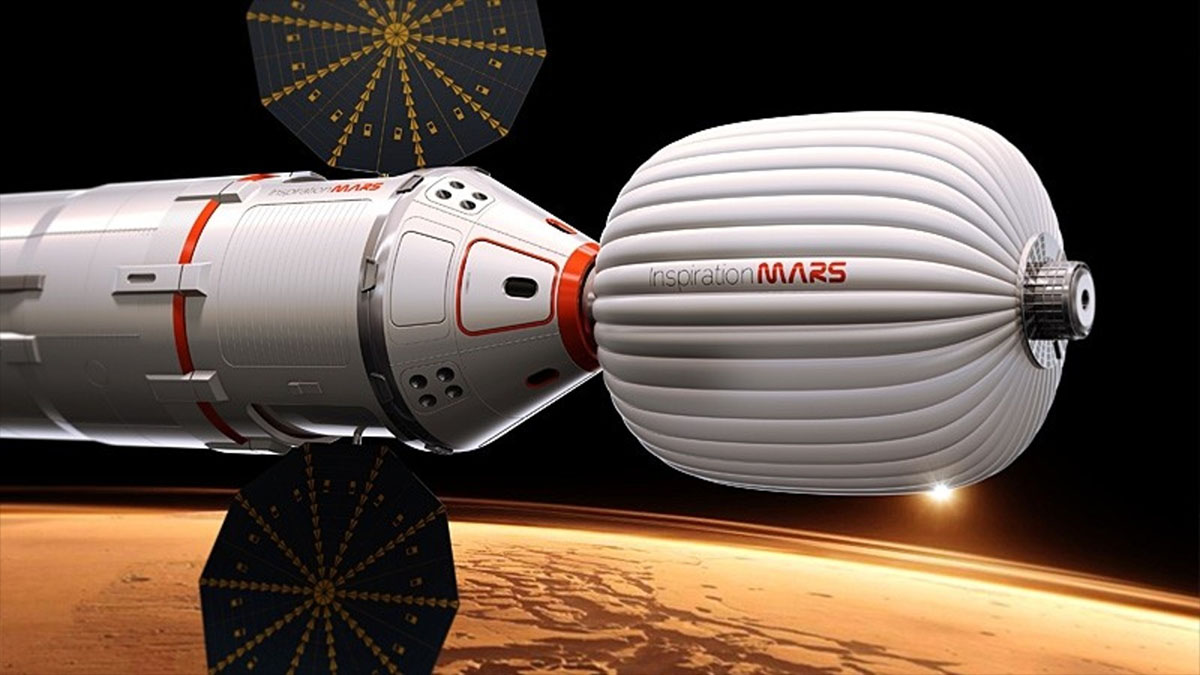why a flyby of mars may not live up to its intention

There’s been plenty of news coverage regarding the Inspiration Mars mission being funded by space tourist and tycoon Dennis Tito, who says he’s willing to pay whatever it takes to make the manned flyby of Mars possible by 2018, when the planets best align for a 501 day round-trip. He needs the SpaceX Falcon Heavy rocket, a manned version of the Dragon tested and ready, and some way to address the intense cosmic ray bombardment in interplanetary space. So as far as ambitious missions go, this doesn’t sound technologically unfeasible Difficult? Certainly so, but not impractical. Expensive? Absolutely, but not so much that it would be impossible to raise the money, especially with crowdsourcing and the participation of other space-minded, wealthy, big picture human exploration enthusiasts. And there’s very unlikely to be a shortage of the married couples with engineering experience Tito suggest should make the flyby. However, there are big problems with what Inspiration Mars wants to do and how, despite the technical feasibility.
Basically, it’s a mission to show the world that the United States still has the lead in space travel and can send humans to Mars and back, just a flight or two away from actually landing them on the surface, as with the Apollo 8 flyby. This means that not only is 2018 important from a purely mechanical perspective, but as Tito says, the next opportunity in 2031 could see attempts from other space powers and would make it harder for the United States to be the first to fly by Mars, much less land on the Red Planet. Remember what happened to Apollo after it achieved its PR goals? Inspiration Mars might not have the same problem if it’s funded by wealthy supporters of long term human space exploration, but these supporters don’t have endless pools of money to pour into mission after mission and after a bad enough market crash, might not be able to justify the expense of supporting the foundation. Even worse, when the country is preoccupied with its unemployment rate, debt, and runaway political brinkmanship, who’s got time for Mars?
Just like the chorus of well meaning but horribly short-sighted voices protested Curiosity, and a pundit or two were unable to resist assailing Musk for not spending his fortune the same way as Bill Gates chose to, there’s bound to be a narrative of a rich old guy wasting money that might have fed some of the poor and needy in this country on some Martian pipe dream. That’s not a great PR project for STEM in the making, especially when we consider that the supposed decay of American science and technology isn’t what it’s made out to be and in fact, we don’t have the jobs for all the engineers and scientists we churn out. Inspiration Mars is one way to create jobs for some scientists and engineers for seven years, but certainly not a long term solution to a big problem that by now is downright institutional. Likewise, the five year design to launch time table seems aggressive to a fault because it doesn’t seem willing to take the time to mature any more efficient ways of getting humans to other worlds in order to make the schedule.
Using a version of a naval nuclear reactor fitted for spacecraft to power a new VASIMR plasma engine could get the crew to Mars faster, provide more energy, allow for more space, and more efficient and ambitious missions. Right now, Tito is planning to launch two people in a tiny pod to travel millions of miles for a year and a third, far away from any visual sign of home and no way back should something really bad happen far enough along in the mission just to show that this could be done. This seems downright inhumane and every simulation of spending a lot of time in crowded isolation on Earth came with familiar gravity, air, and knowledge that should things not work out, the participants can just leave. Even year-long stays on a space station came with the familiar blue marble constantly below and a short trip home possible in an emergency. But over one year in the space of an RV floating in the darkness with one other person, no niceties and creature comforts as part of a PR push for a well equipped, major mission? Seems rather harsh, and like the Mars 500 experiment shows, mentally exhausting for the astronauts.
Look, I’m one of the last people to say no to a Mars mission. My view on space exploration has consistently been that we’re under-funding it and not doing enough of it. But I also know that we have to do things the right way, plan for long term outposts and missions on another world, and we need to return to the Moon to help us do it. Then, we can build an inflatable space base that uses nuclear reactors adopted from submarines to power plasma engines and send larger and more diverse crews for long term missions to Mars, protected by an artificial magnetosphere and with ample supplies and materials for sustaining the station for years. Having a massive effort to start a Mars outpost and create comfortable, safe, efficient mission options would be a better PR effort than a flyby with what we have laying around just to say we can do it. After all, we won’t be exploring the rest of the solar system using chemical rockets if we want to get humans anywhere within a manageable time schedule. Why start an effort to land on Mars using an updated Apollo concept rather than develop a strategy for long term discovery and outpost building?





